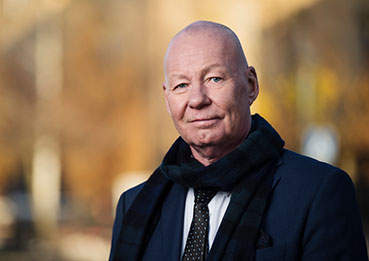Before Christmas, the newspaper Dagens Industri started a series of articles on this topic. Under the headline “Researcher drain hits industry hard”, the article discusses the fact that many doctoral students at Swedish universities come from other countries and move abroad after graduation. This is known as the ‘brain drain’ and the consequence is that Swedish industry has less access to qualified, research-trained personnel.
In 2023, there were 17,500 doctoral students in Sweden, 36 percent of whom will be from other countries, compared to 13 percent in 2000. In engineering, the figures are 54 and 18 percent respectively. The trend is clear. Doctoral education has become much more international in the 2000’s, as have other categories of performance and student groups. Since the total number of doctoral students is now about the same as it was 20 years ago, this means that the number of Swedish doctoral students has fallen by the same amount.
We also know that many foreign doctoral students leave Sweden after their studies. Among those who graduated in 2010, 38 percent remained in Sweden three years after graduation. Among those who graduated in 2015, the figure was 54 percent. The proportion staying has therefore increased. All figures are taken from UKÄ’s reports or statistical database.
It is easy to conclude that the supply of doctoral graduates in Sweden has decreased in line with increased internationalization. It is then natural to question internationalization as such, not least because doctoral education in Sweden is paid for by the taxpayer. Moreover, the times are such that internationalization can be seen as a problem for many different reasons.
So let me take the opposite view. Internationalization is essential if we want to maintain research of the highest quality, and it is only natural that graduates from Swedish universities seek careers both in Sweden and abroad. It becomes a problem when graduates in other countries do not see Sweden as a possible country for further careers. If Sweden only ‘exports’ skills to other countries, but is not able to ‘import’ graduates from other countries, internationalization will be one-sided and problematic for the Swedish supply of skills.
I have not seen any figures that shed light on the situation on the labour market in general, but I would like to rephrase the basic question: It is not just a question of how many people graduate from Swedish universities and then choose to stay and work in Sweden, but also how many people with doctorates work in the Swedish labour market, how this number has developed over time, how many people who come have Swedish or foreign doctorates, and how this corresponds to the needs of the labour market.
Questions about the attractiveness of the Swedish labour market and how easy or difficult it is to establish oneself in the Swedish labour market are therefore questions that should be included if the discussion about the ‘brain drain’ is to be used as a basis for change and measures.Such measures should therefore be aimed at strengthening the attractiveness of the Swedish labour market, regardless of where the doctoral degree was obtained.
This includes a basic understanding that the solution to the problems of supplying doctoral graduates is not less internationalization, but a better ability to attract talent in an international or global competition.

